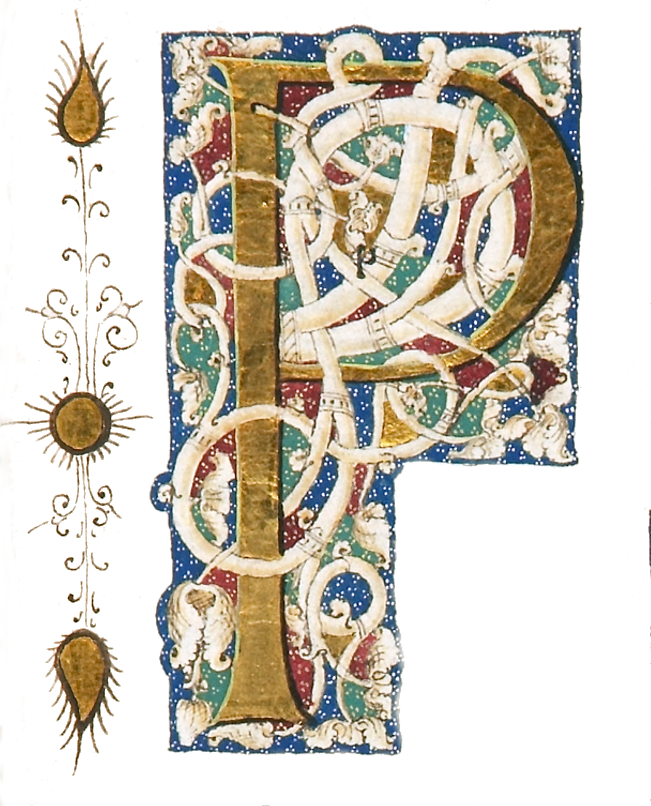1537-38 · Venice
by (BINDINGS - 16TH CENTURY GILT-TOOLED ITALIAN). PLUTARCH
Venice: Bernardino di Bindoni, 1537-38. 161 x 109 mm. (6 3/8 x 4 1/4"). Two volumes. Translated from Greek into Latin, then from Latin into Italian.
Contemporary gilt-tooled Roman red morocco covers laid onto modern calf, later spine with raised bands and decorated in gilt and blind, all edges gilt and with original elaborate gauffering in a knotwork design. Housed together in a marbled paper slipcase. Title pages with woodcut frame featuring medallion portraits of Janus, Caesar, Marcus Aurelius, Cleopatra, Pompey the Great, and Alexander the Great, full-page printer's St. Peter device at end of volume I, smaller device on final page of volume II, and 50 WOODCUT HEADPIECE VIGNETTES. Front pastedown with ex-libris of Giuseppe Bolasco. Essling 600; EDIT16 CNCE 23131. For the binding, see Hobson, "Apollo and Pegasus Bindings" 46 and 131; De Marinis 713 and 733, Pl. CXXIII. Isolated faint foxing, mild browning, and minor stains, one leaf with one-inch curving paper flaw affecting a couple words of text, but a very fresh, clean copy in bindings showing almost no wear.
This is an attractive vernacular edition of an enduring classic, in a binding with decorative elements that can be linked to one of the famed Apollo and Pegasus binders identified by Hobson. The second century Stoic philosopher Plutarch was a key source for Greek and Roman history, and one of Western civilization's most influential authors. His writing is of lasting interest because he had a particular ability to delineate character and present the vagaries of history in a way that engages as well as instructs. In his celebrated "Lives," he pairs biographies of Greeks with Romans--the tragic Spartan reformers Agis and Cleomenes, for example, with the Roman revolutionary Gracchi brothers--pointing out the parallels and philosophizing on their fall. Under the spell of Platonic philosophy, Plutarch turns his biographies into examples of the right and wrong paths of life. Part I of this edition is a translation by Battista Alessandro Iaconelli that was first printed in 1482; the first Bindoni edition was issued by our printer's father in 1529. The second part was translated by Giulio Bordone and was added to the first part after 1525. Ours is the first complete edition from the Bindoni press, which was active in Venice from about 1525-55. Our covers share tools in common with bindings by Roman bookseller and binder Marcantonio Guillery (fl. 1544-65), described by Hobson as the best of the three craftsmen who created the famous Apollo and Pegasus bindings for Giovanni Battista Grimaldi. The curling vine terminating in a two-petalled, tulip-like flower and the fleuron that is used to create the side panel ornaments look remarkably like Guillery tools pictured in plate CXXIII of De Marinis' "La Legatura Artistica in Italia nei Secoli XV e XVI.". (Inventory #: ST20301)
Contemporary gilt-tooled Roman red morocco covers laid onto modern calf, later spine with raised bands and decorated in gilt and blind, all edges gilt and with original elaborate gauffering in a knotwork design. Housed together in a marbled paper slipcase. Title pages with woodcut frame featuring medallion portraits of Janus, Caesar, Marcus Aurelius, Cleopatra, Pompey the Great, and Alexander the Great, full-page printer's St. Peter device at end of volume I, smaller device on final page of volume II, and 50 WOODCUT HEADPIECE VIGNETTES. Front pastedown with ex-libris of Giuseppe Bolasco. Essling 600; EDIT16 CNCE 23131. For the binding, see Hobson, "Apollo and Pegasus Bindings" 46 and 131; De Marinis 713 and 733, Pl. CXXIII. Isolated faint foxing, mild browning, and minor stains, one leaf with one-inch curving paper flaw affecting a couple words of text, but a very fresh, clean copy in bindings showing almost no wear.
This is an attractive vernacular edition of an enduring classic, in a binding with decorative elements that can be linked to one of the famed Apollo and Pegasus binders identified by Hobson. The second century Stoic philosopher Plutarch was a key source for Greek and Roman history, and one of Western civilization's most influential authors. His writing is of lasting interest because he had a particular ability to delineate character and present the vagaries of history in a way that engages as well as instructs. In his celebrated "Lives," he pairs biographies of Greeks with Romans--the tragic Spartan reformers Agis and Cleomenes, for example, with the Roman revolutionary Gracchi brothers--pointing out the parallels and philosophizing on their fall. Under the spell of Platonic philosophy, Plutarch turns his biographies into examples of the right and wrong paths of life. Part I of this edition is a translation by Battista Alessandro Iaconelli that was first printed in 1482; the first Bindoni edition was issued by our printer's father in 1529. The second part was translated by Giulio Bordone and was added to the first part after 1525. Ours is the first complete edition from the Bindoni press, which was active in Venice from about 1525-55. Our covers share tools in common with bindings by Roman bookseller and binder Marcantonio Guillery (fl. 1544-65), described by Hobson as the best of the three craftsmen who created the famous Apollo and Pegasus bindings for Giovanni Battista Grimaldi. The curling vine terminating in a two-petalled, tulip-like flower and the fleuron that is used to create the side panel ornaments look remarkably like Guillery tools pictured in plate CXXIII of De Marinis' "La Legatura Artistica in Italia nei Secoli XV e XVI.". (Inventory #: ST20301)













